It was once the premier street on which generations of Dubliners and visitors to the capital shopped and socialised, and where the brightest stars of stage and screen such as Elizabeth Taylor and Richard Burton stayed while filming. O’Connell Street is these days more readily associated with antisocial behaviour, from the unpleasantness of illegal drug trading and drug abuse to the ugliness of random acts of violence.
It’s a sorry state of affairs when the street’s place in the nation’s history is considered, and the role its principal building, the GPO, played in 1916 as the headquarters of the Easter Rising.
That event, coupled with the street’s renaming in 1924 from Sackville Street to O’Connell Street in honour of the 19th-century nationalist leader Daniel O’Connell, should have been sufficient to secure its status as Ireland’s most celebrated stretch with a standing akin to that of Oxford Street in London, the Champs Élysées in Paris or Fifth Avenue in New York. But that hasn’t been the case for several decades now, with the street suffering by comparison with Grafton Street.
But just how much of O’Connell Street’s current, negative reputation can we ascribe to its reality and how much of it is informed by perceptions perhaps fuelled by some reporting of incidents such as the recent assault on American tourist Stephen Termini on nearby Talbot Place?
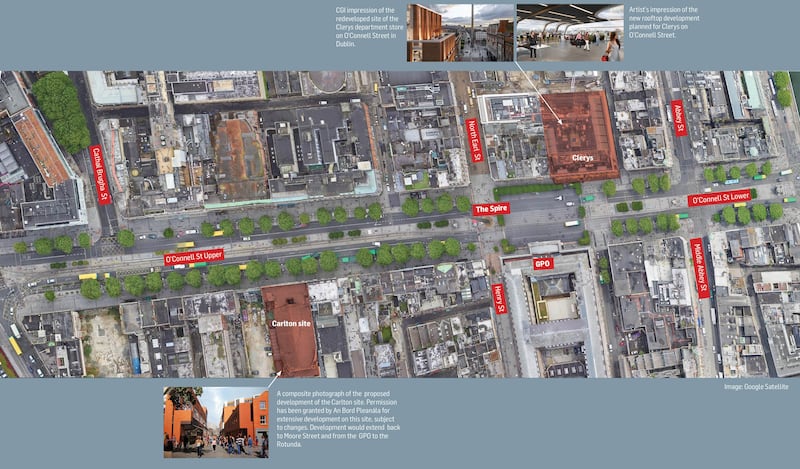
While there’s no easy answer to that question, there is always an “edge” to the street even on a recent Friday afternoon. We had barely passed Bachelor’s Walk before encountering a scene that will be all too familiar to anyone who frequents the street.
Overlooked by the statue of Daniel O’Connell, an apparently malnourished woman is hunkered down against a shopfront, paper coffee cup in hand, asking passersby for change. She’s in a heated argument with a man and woman who are looming over her. Insults are shouted.
For passersby, it’s a relatively unthreatening episode but a reminder of the misery that is part of life on today’s O’Connell Street.
With accommodation for the homeless and services for those with addiction issues so heavily concentrated in Dublin’s north inner city, O’Connell Street and its surrounds have unsurprisingly become a focal point for both.
Dublin residents may have become somewhat inured to the sight of public drug use and drug trading and its attendant poor behaviour, but how must it appear to the millions of tourists who visit the capital each year?
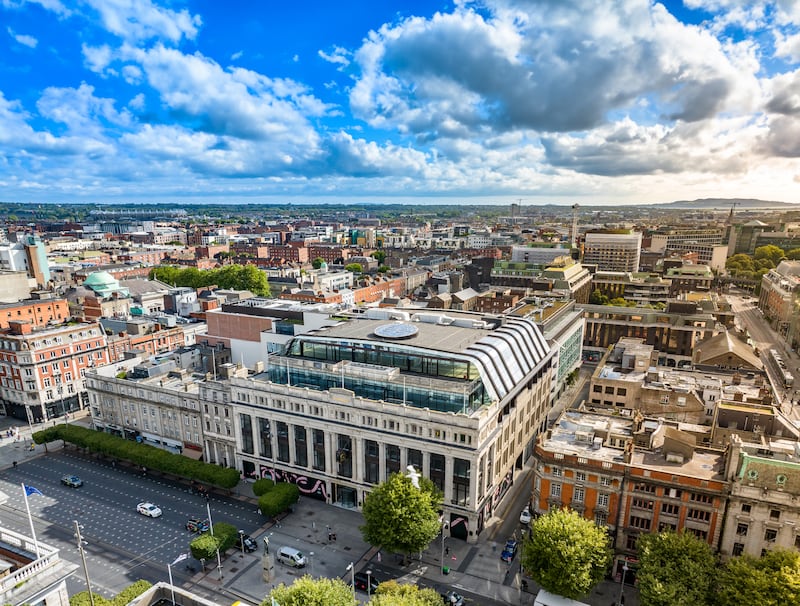
Crack cocaine
“We do know people feel uncomfortable and we track it, and there are issues about drug use again and again,” says Richard Guiney, chief executive of business representative group Dublin Town.
“What we have found in the last while is that there is a lot of crack cocaine as opposed to heroin, which does alter people’s behaviour and perceptions of safety among the general public. Those who are taking drugs are more agitated when they’re taking crack cocaine rather than heroin [...] They’re more inclined to instil a sense of discomfort among the rest of the population. We do need to address this,” Guiney says.
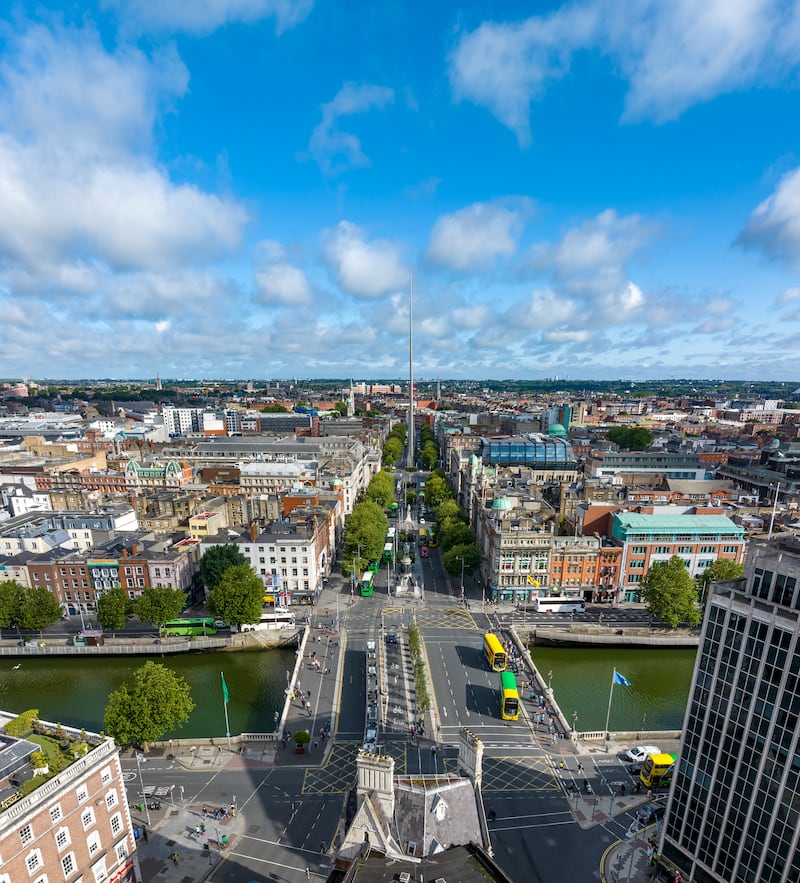
Fr Peter McVerry, founder of the Peter McVerry Trust housing and homeless charity, has a different take on the public unease generated by illegal drug use on the street.
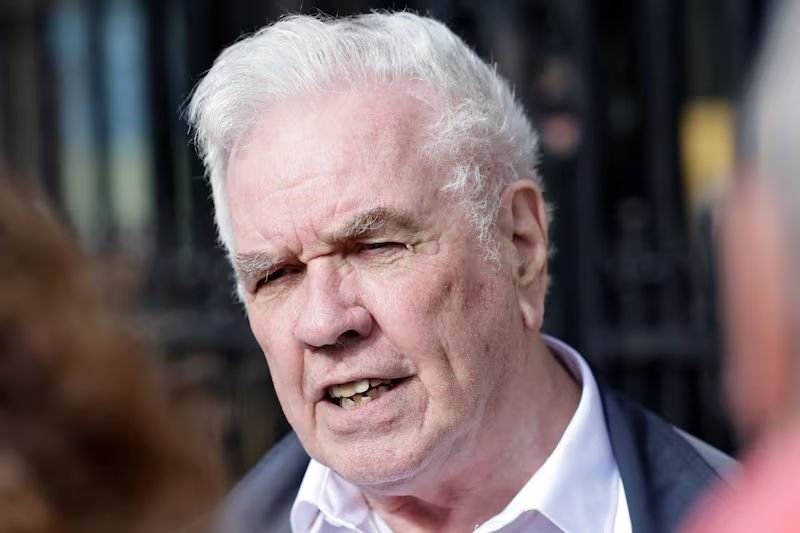
He says: “It’s society’s fault, it’s not the drug users’ fault, that O’Connell Street is perceived to be unsafe. We’re simply not addressing the needs either of homeless people or of drug users. There should be nobody homeless, and the hostels that exist for homeless people, many of them are just unfit for purpose.”
For those politicians who believe the presence of the homeless and the drug-addicted on O’Connell Street is something that can be dealt with by more visible and “tougher” policing, both McVerry’s and Guiney’s analysis is sobering.
McVerry says: “Unfortunately, a lot of homeless people do congregate in the city centre because there’s life there, there’s people there, so it’s understandable. You can’t disperse them out to the suburbs [and] they won’t go there and they won’t stay there. So if that’s where homeless people are, that’s where the services are going to have to be. It’s not the services that are the problem, it’s the lack of access to addiction services. There’s a long wait list to get into treatment.”
Guiney says: “I’d like to see more guards and we’re hoping to get more. Nothing makes people feel safer than seeing a guard on the street... but similarly, we know that you can’t have a guard on every street 24 hours a day. We’re not a police state.”
It’s clear that O’Connell Street faces a formidable challenge in trying to restore its reputation in tandem with the long-promised regeneration which is hoped will get under way with the opening of the Clerys Quarter later this year. In its 2022 planning control scheme document for the street and it environs, Dublin City Council states: “The redevelopment/refurbishment of some key sites on O’Connell Street – including the ‘Carlton site’ and the former Clerys department store building – have the collective potential to create a new vitality by improving the balance of office, residential and retail uses in the area.”
[ Five features of Dublin’s O’Connell Street you may not have noticedOpens in new window ]
Former grandeur
But evidence of this renaissance is thin on the ground on the strip between the O’Connell monument and the junction with Middle Abbey Street. There’s a Starbucks on the corner, one of the two Seattle-headquartered coffee giant’s outlets on the street, and one of seven coffee shops on the street overall. Other occupiers here include Hickey’s Pharmacy and Burger King, one of the chain’s two outlets on the street, and one of eight fast-food offerings along with McDonald’s, which occupies the unit just three doors down. Two footwear retailers – Footlocker and Schuh – take up the remaining spaces next to the home-grown fast-food restaurant Supermac’s, which sits at the junction with Middle Abbey Street.
Looking for a flavour of O’Connell Street’s former grandeur? Pause for a moment and look above the mishmash of modern retail signage to the elegant facades of the upper floors. Although the regulations concerning fire safety and disability access are understandably strict, the positive impacts that could flow from people living above even a few of these shops can be imagined.
Quite apart from the benefit of providing homes in the city centre, the presence of residents capable of observing and recording incidents of antisocial behaviour without being seen themselves could act as a deterrent. The possibility of providing homes is there. Only recently, this was evidenced by the conversion of the first, second and third floors above the newly opened Levi’s store at 42-43 Henry Street into eight apartments.
Stepping across Middle Abbey Street and past the Asics sportswear store on the corner at 43-44 Lower O’Connell Street, one comes across the first of the street’s acknowledged stalwarts. Eason & Co, the Irish-owned bookseller and stationer which came into being in 1886 with Charles Eason’s acquisition of his employer WH Smith’s Dublin branch at Eden Quay, arrived to number 21 on what was then Lower Sackville Street in 1856. From 1864, the company began operating its wholesale business around the corner at 86 Abbey Street and in 1887 it purchased the main building at the site it continues to occupy to this day at number 40 Lower Sackville Street (now Lower O’Connell Street). In 1916, both the Abbey Street and Sackville Street properties were destroyed in the Easter Rising, forcing the company to take temporary premises for four years.
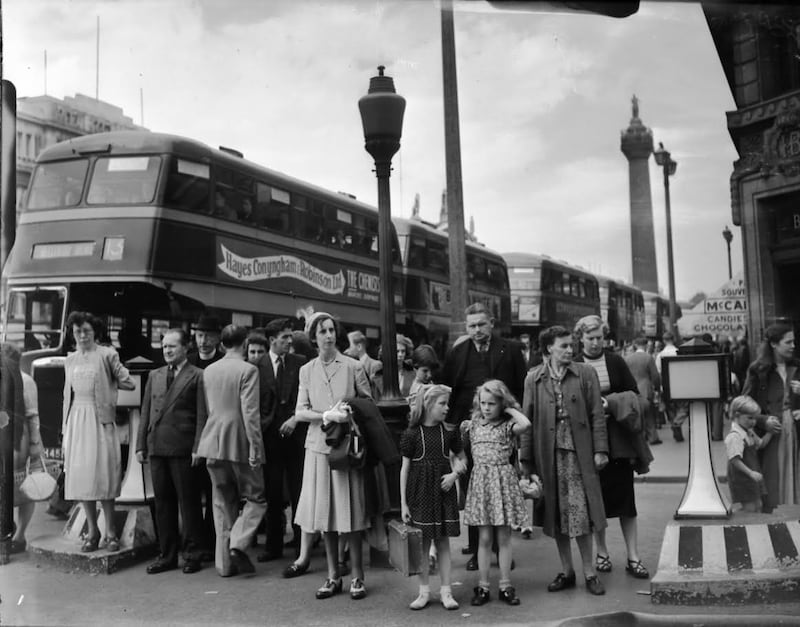
By 1920, Eason’s current premises were rebuilt as a single building comprising the Abbey Street property and numbers 40 and 41 Lower Sackville Street. While the War of Independence and the Civil War were to cause disruptions to Eason’s business, which included pressure to cease supplying English newspapers, the company had become the country’s foremost supplier of books and stationery by the end of the decade.
Sitting next door to Eason is the O’Connell Street premises of fast-fashion retail giant Penneys. Founded by the late Arthur Ryan with the opening of its first store on nearby Mary Street in 1969, today the company, which trades as Primark internationally, employs some 72,000 people across more than 400 stores in 15 countries.
Penneys’ presence on O’Connell Street, however, is a relatively recent phenomenon. Before its opening there in the early 1990s, its premises at 39 O’Connell Street Upper had been occupied for many years by the now-defunct British Home Stores (BHS). Frequently the subject of bomb scares phoned in during the Troubles, the UK retailer acquired the site of the former Metropole Cinema and Restaurant following their closure in 1972.
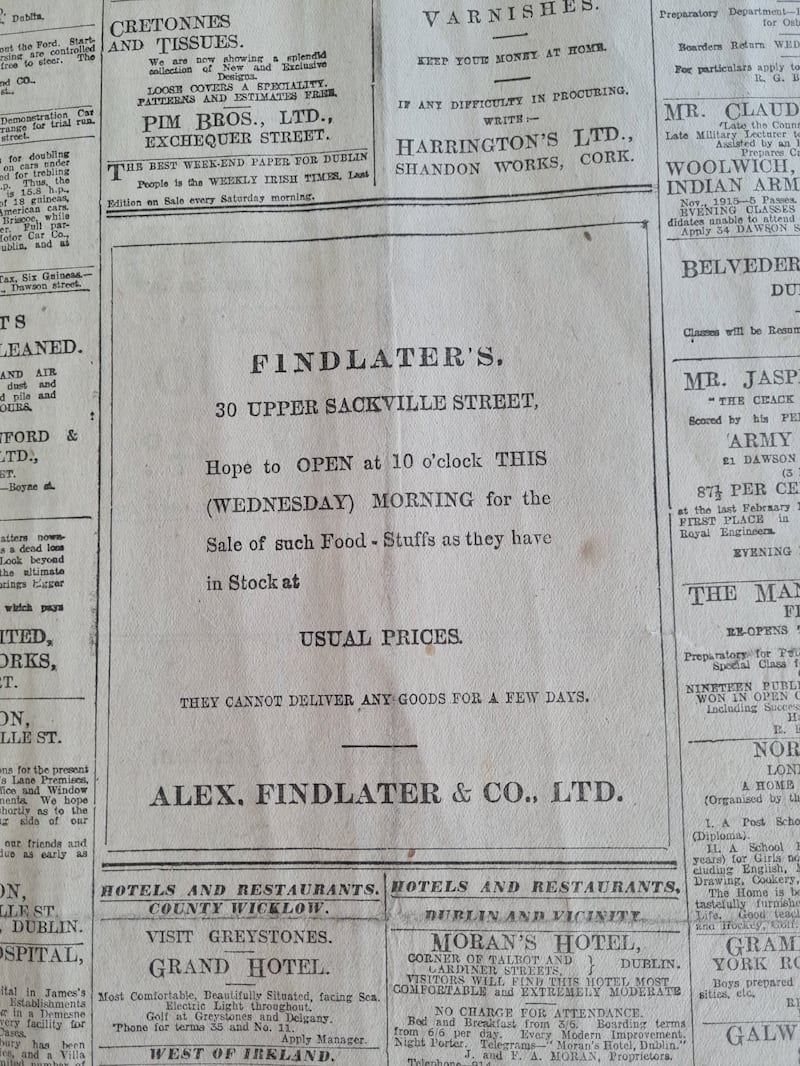
The Metropole, which took its own name from the Metropole Hotel, one of the city’s finest hotels which had been destroyed in the 1916 Rising, was, according to the website rareirishstuff.com, “one of the most fashionable venues in Dublin” with a “magnificent auditorium” along with a ballroom, shops and a restaurant, making it a “great feature of Dublin life”.
While the ugly building developed originally for BHS on the site of the Metropole and former Capitol cinema on North Prince’s Street in the 1970s isn’t such a great feature, it could have been much worse. Indeed, the developers had to be forced by the city planner, according to Archiseek.com, to use stone and windows in their design instead of the solid box of concrete panels they had envisaged.
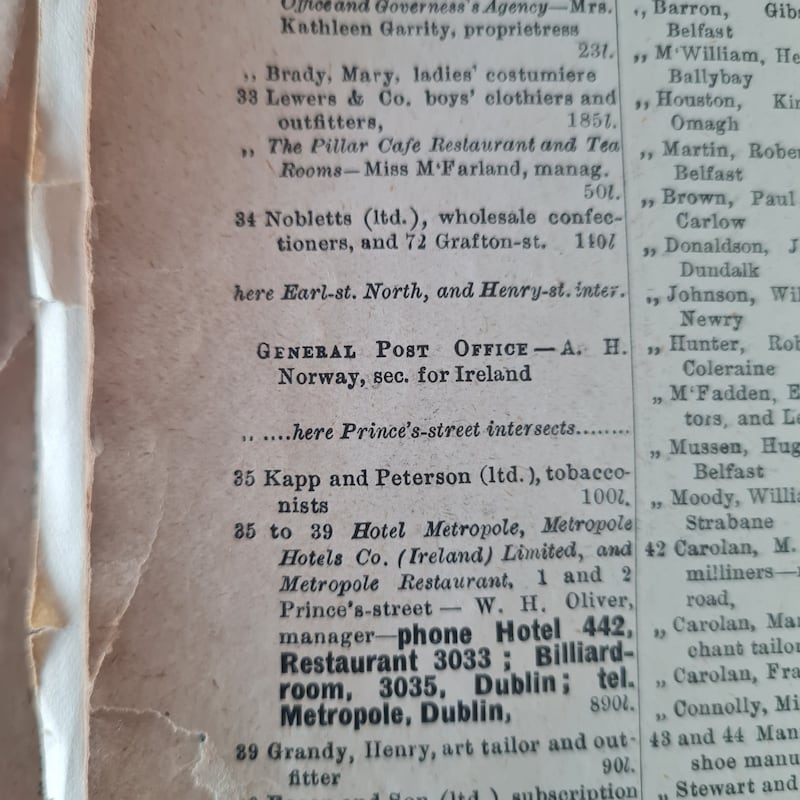
Sitting just across North Prince’s Street is the GPO, headquarters of the national postal service for more than 200 years but also the headquarters of the Easter Rising in 1916. In 1925, the Office of Public Works (OPW) began the reconstruction and extension of the GPO, with the building we know today being formally reopened in 1929. Quite apart from serving its original purpose as the main sorting office for the postal service, the redeveloped property now also comprised the original radio studios of RTÉ along with the GPO Arcade retail strip.
While the GPO continues to operate as a post office at ground-floor level today with a GPO museum space, its headquarter operations moved earlier this year to the newly developed Exo Building in Dublin’s north docklands, where the service occupies space for 800 workers across a total of 7,364sq m (83,572sq ft) on six floors.
‘At an early stage’
Asked by The Irish Times for an update of its plans for the GPO, a spokesman for the OPW said the process of the building being transferred from An Post is “at an early stage”. The spokesman added that there is ongoing engagement between the OPW, the Department of the Environment, Climate and Communications, and An Post regarding how the building will be used “but the rich cultural heritage of the building will be preserved through continued operation of the historic post office and other cultural uses on the ground floor”. The upper floors will become offices for civil servants, the spokesman said.
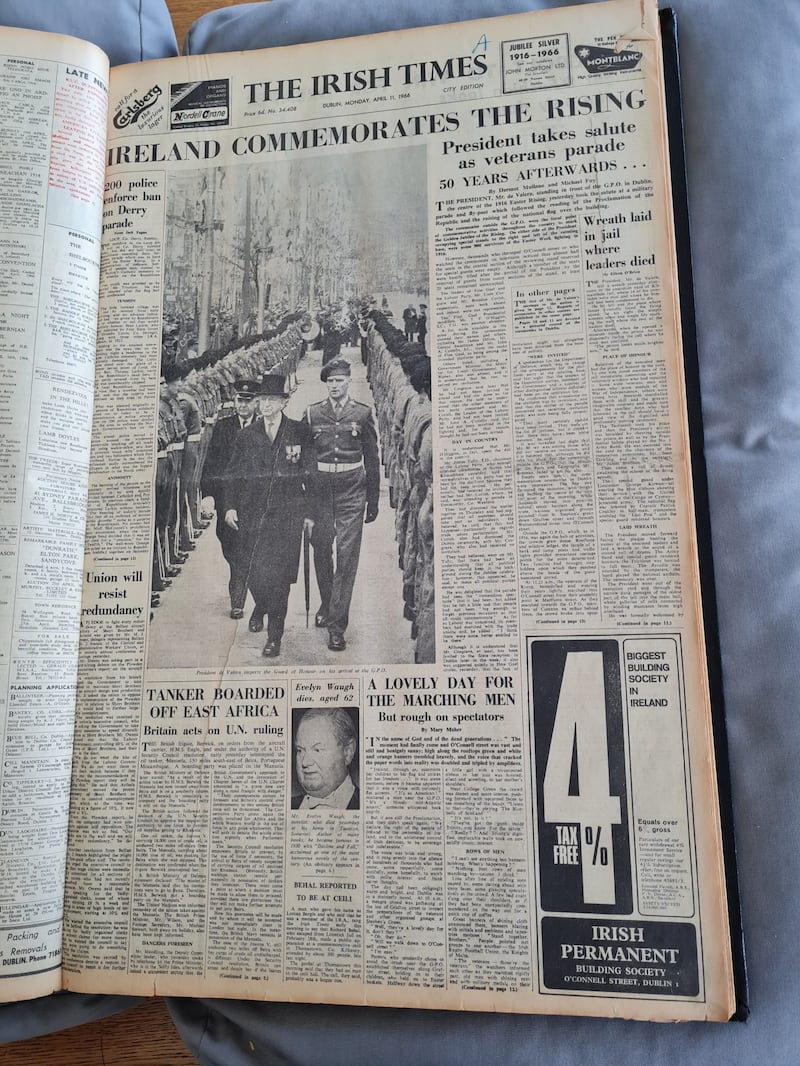
Former taoiseach Bertie Ahern has long been a supporter of using more of the building as a museum devoted to commemorating the 1916 Easter Rising and the Irish fight for independence. As it stands, the current GPO museum space is confined to a space on the left-hand side of the ground floor and at basement level.
Ahern says: “It was a long-held position of An Post to move out of the GPO but to keep the ground floor as the post office [with An Post services] and to have a museum that would cover all of 1916 [...] that would attract visitors to O’Connell Street, which might help then to up the quality of shops and businesses on O’Connell Street. That was the idea back 25 years ago.
“The plans are there. This stuff has been there for yonks,” he says. “It wouldn’t take that much money and the OPW are good at doing these things.”
Sinn Féin spokesman on arts and culture Aengus Ó Snodaigh also has firm views on the future of the GPO. “The GPO, and the historic streetscape of Moore Street, must be protected, preserved and restored to allow future generations to appreciate the significance of the events of Easter week 1916,” he said in a statement.
Before we pass the GPO, we take a moment to consider the Spire on the street’s central median. It’s a structure that Dubliners can find hard to love, but for tourists and other visitors the so-called “stiletto in the ghetto” is an accepted landmark and a point of reference that many use both as a meeting place and to find their way to the centre of the city’s main thoroughfare. While it may be a poor substitute in terms of its aesthetics when compared with Nelson’s Pillar, which overlooked the street until the moment it was blown up by IRA man Liam Sutcliffe, on March 8th, 1966, it may also be more acceptable to most than the symbol of British rule over Ireland that it replaced.
[ Funeral of man who blew up Nelson’s Pillar held in DublinOpens in new window ]
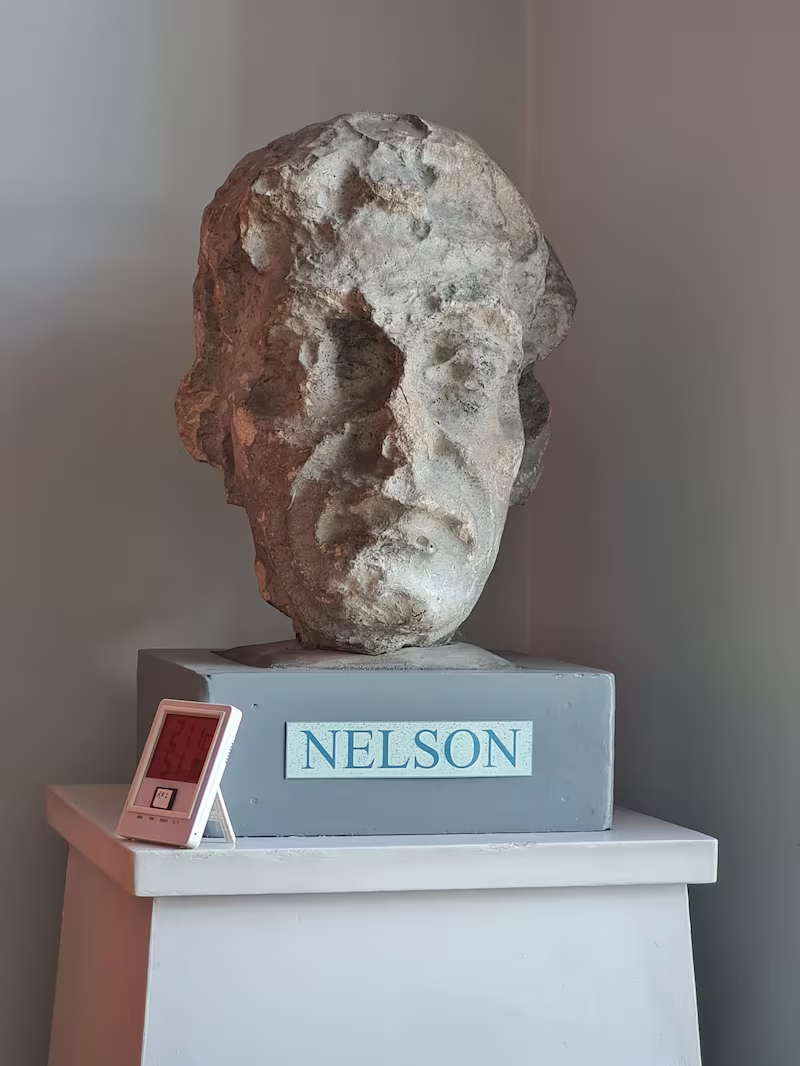
Moving further along the street, the offerings include a tourist information office at 1 O’Connell Street Upper; another McDonald’s; Irish fashion and gifts retailer the Aran Store; the head office of Dublin Bus; a branch of Carrolls Irish Gifts; no less than three casinos in the form of Funland, Dr Quirkey’s Good Time Emporium and Ned Kelly’s Sports Club; the Ten Thousand World Buffet, and the former Carlton Cinema building.
The Carlton building and several other of the buildings along this strip form part of the long-awaited Dublin Central development which is to cover a 2.2-hectare (5.5-acre) site extending from O’Connell Street to Moore Street, with access provided by way of a newly created pedestrianised street between the two. While the long-anticipated regeneration of this area is being led by UK property giant Hammerson, the site itself was assembled originally by developer Joe O’Reilly’s Chartered Land at a cost of some €180 million over the course of 4½ years in the early 2000s.
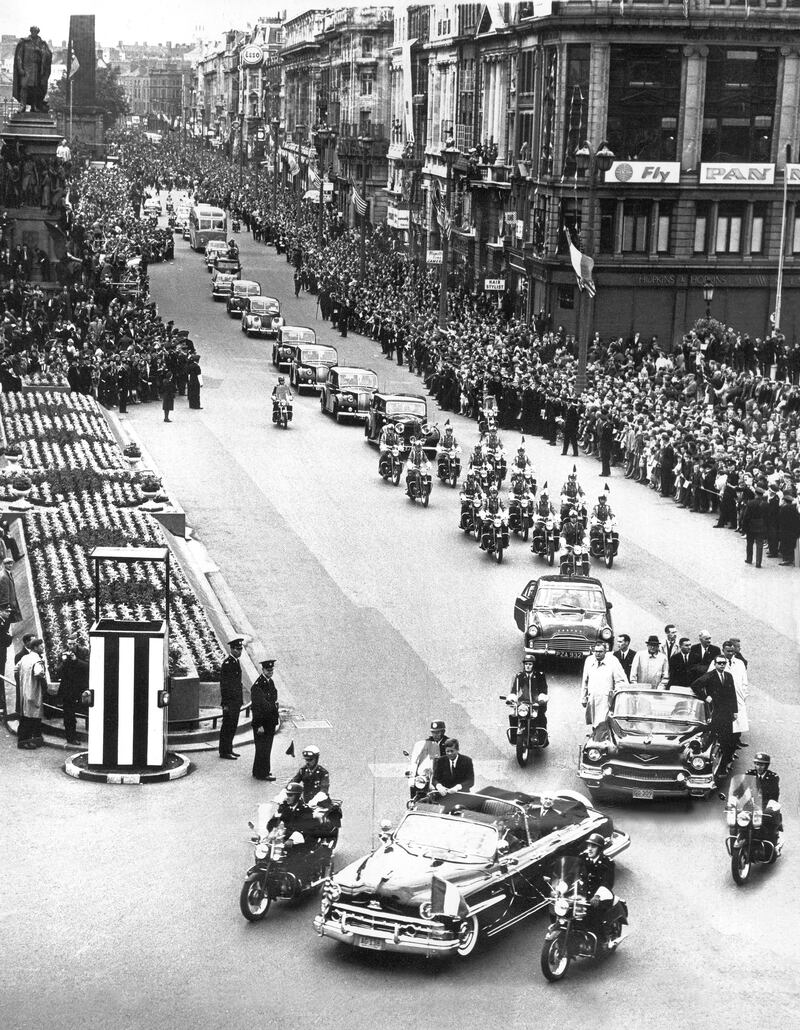
Though the pace of progress continues to be slow, Hammerson told The Irish Times that it is intent on “reinstating the site as a focal point of Dublin life”, with plans for the development of 9,300sq m (100,100sq ft) of shops, restaurants and cafes, 43,000sq m (463,000sq ft) of office space, 97 new homes, up to 210 hotel rooms and a new public gallery. Its plan also includes the restoration of 14-17 Moore Street as a “national monument” to recognise its involvement in the 1916 Rising.
‘Tragic for Dublin’
The Carlton building has been proposed as the site of the O’Connell Street station for the long-promised MetroLink underground rail line, construction of which the Government proposes will be under way by 2024, latest reports say. As a protected structure the facade will be retained, according to a spokesperson for Hammerson, behind which a new structure will be built with a restaurant overlooking the street on the first floor, where the Carlton Grill was once located. Author and former environment editor of The Irish Times Frank McDonald believes it is “tragic” that the building is not being retained for use as a music venue: “The only thing that will survive is the Carlton facade, which I think is tragic for Dublin and the street in particular,” he says.
Guiney believes the Hammerson development “will facilitate pedestrian movement in the northside of the city”.
“The feedback, anecdotally, from retailers is that tourist spend is roughly five times on the southside what it is on the northside of the city. They measure that by what is spent on foreign credit cards,” Guiney says.
At one stage, when I was taoiseach, the aim was to get that [development] finished for 2016, and here we are in 2023 and I don’t think anything has started, so it’s a bit ridiculous
— Bertie Ahern, on the Dublin Central development on O'Connell Street
“There is more to engage tourists on the southside and we have to be honest about that. I think the GPO is great and when the national monument on Moore Street is developed that will be great too, but we have to do more to encourage a more even flow.”
Ahern, for his part, is frustrated by the pace of progress to date on the Dublin Central site.
“At one stage, when I was taoiseach, the aim was to get that [development] finished for 2016,” says Ahern, “and here we are in 2023 and I don’t think anything has started, so it’s a bit ridiculous.”
“Imagine if [it was] Oxford Street or the Champs Élysées, that you’d have an argument about a development that’s taking up a third of the street going on for 20 years. It’s crazy,” he says. “I don’t care who or what is responsible, it should be thrashed out.”
Sinn Féin has been vocal in its opposition to the redevelopment of Moore Street as planned, citing it as an area of historical significance, with Ó Snodaigh referring to the Hammerson project as an “unforgivable act of State-sponsored vandalism”.
Frank McDonald doesn’t think the focus of the planned development makes sense for the city: “The bulk of it is office space, apparently, and I think anybody who would contemplate building large-scale offices in Dublin at present needs their head examined.”

Why can't we keep Dublin city clean?
Poignant reminder
Further up the street is the last remaining Georgian house at No. 42 O’Connell Street, a protected structure dating from the 1750s and a poignant reminder of what the street would have looked like when it was primarily residential.
[ Last Georgian house on Dublin’s O’Connell Street is at risk from neglectOpens in new window ]
The gap between No. 42 and the former AIB Bank branch building at the junction of O’Connell Street Upper and Parnell Street is to become part of the Dublin Central development and it’s here that the scheme’s new pedestrian link to Moore Street will be located. The neoclassical AIB building, which was built between 1921 and 1922, meanwhile, is in the process of being acquired by an investor with plans for its redevelopment as a boutique hotel or other hospitality venue.
As we cross the street at the Parnell monument, the width of its pavements and the potential of the median is obvious. It’s something that Guiney is keen for Dublin City Council to exploit.
He says: “I do think there is scope there. There are very wide footpaths that could facilitate outdoor dining. And we do need to improve the lighting, certainly in the central median.”
Walking back in the direction of O’Connell Bridge, there’s a Londis, one of five convenience stores on the street. After that comes Murray’s bar and the 198-bedroom Holiday Inn Express Hotel, which was developed in 2016 on the site of the former Findlater House office block. Findlater House, for its part, took its own name from the famous Dublin grocers, Alex Findlater & Co, whose store occupied the site until 1968.
Crossing Cathal Brugha Street, we arrive at the entrance to what is now officially known as the Hotel Riu Plaza Gresham Dublin following its sale by the National Asset Management Agency (Nama) for €92 million to the Spanish hotel group Riu in 2016. This four-star, 340-bedroom property will still be best known by many as the Gresham Hotel. But even that name marked a slight change from its original title of Gresham’s Hotel, which it held for its first 48 years in business (1817-1865) under the ownership of its founder, Thomas Gresham.
In 1865, a group of Cork businessmen acquired the hotel’s three adjoining Georgian town houses and redeveloped them behind a single facade. Burned to the ground during the Civil War in 1922 in reprisal for providing a haven for anti-Treaty forces, the Gresham that we know today was rebuilt and reopened in 1927.
Over the following decades, the hotel established itself as one of Dublin’s foremost hotels, proving itself to be more than a match for the Shelbourne Hotel on St Stephen’s Green and the then Jurys Hotel on Dame Street. At the height of its powers, the Gresham hosted the biggest stars in Hollywood including John Wayne, Bing Crosby, Jimmy Stewart, and Laurel and Hardy, as well as Elizabeth Taylor and Richard Burton. Jazz legends Louis Armstrong and Ella Fitzgerald also stayed at the Gresham, as did former US president Dwight D Eisenhower.
When Princess Grace and her husband, Prince Rainier of Monaco, first visited Ireland in June 1961, such was the excitement that 50 people had to be treated by ambulance crews as thousands descended upon the Gresham, eager to catch a glimpse of the couple as they arrived for a banquet.
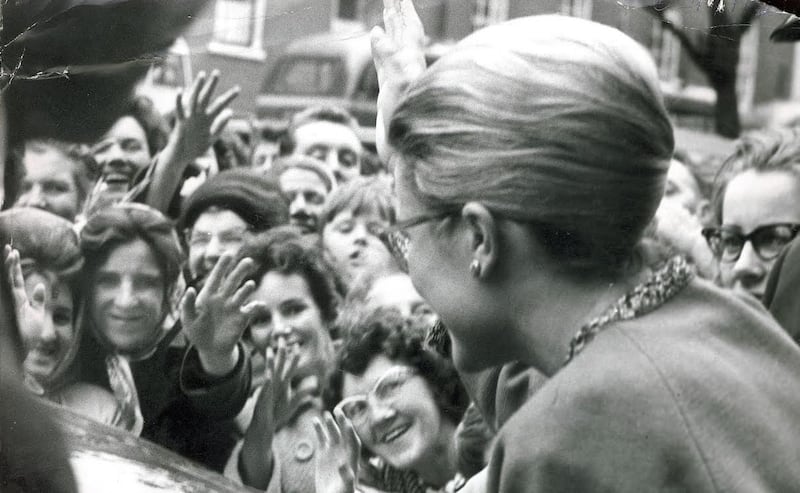
[ Scuffles outside Gresham during royals' 1961 visitOpens in new window ]
Frenzied fans
When the Beatles came to Dublin to perform at the Adelphi Cinema on Middle Abbey Street on November 7th, 1963, they famously made their escape from their frenzied fans in the back of an Evening Herald newspaper delivery van to the Gresham for an overnight stay.
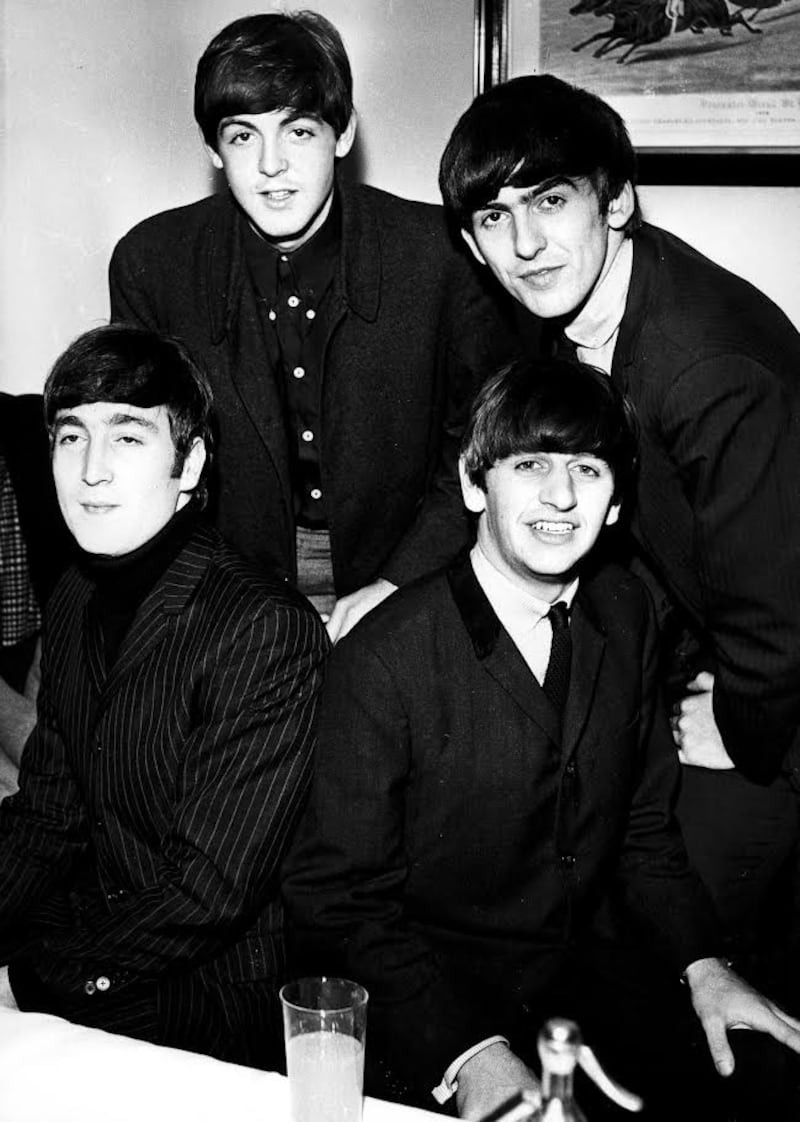
[ When The Beatles played Dublin and sparked a riot at ArnottsOpens in new window ]
Taylor and Burton were longer-term guests at the hotel, staying there for 10 weeks in 1965 while Burton was filming the big-screen adaptation of John le Carré's Cold War novel The Spy Who Came in from the Cold. Clearly determined to enjoy their stay, the newly married couple ordered a bigger bed for their suite shortly after their arrival. The Gresham catered to their every need, even feeding Taylor’s pet monkey, which spent much of its stay in the bathroom.
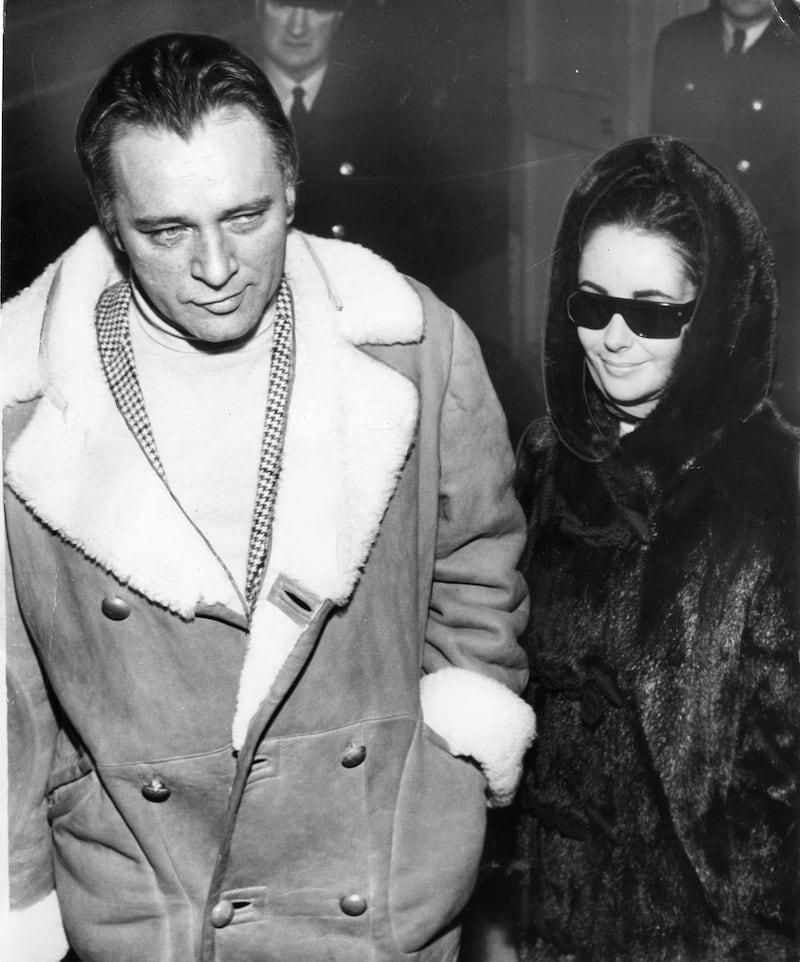
Sitting next door to the four-star hotel is another stalwart of the street, the Savoy Cinema. Built on the site of the former Granville Hotel, which had been destroyed in the 1916 Rising, the Savoy opened for business on November 29th, 1929. The cinema, which was built in accordance with the guidelines set down for the reconstruction of O’Connell Street in the period following the Civil War, has a classical facade with art deco detailing.
According to a 2009 account written by Des Kerins, whose uncle, Harry Kerins, worked as an usher at the Savoy for many years, its interior originally comprised a stage and 3,000 seats set within a Venetian-style theatre with mock Venetian windows, a proscenium arch modelled on the bridges of Venice and a curtain with a painting of the Doge’s Palace emblazoned on it. The cinema was also fitted with elevators, a cloakroom, telephone kiosks and a restaurant.
One of the Savoy’s greatest successes, Kerins wrote, was the showing of Gone with the Wind in 1942. The movie ran for eight weeks and was seen by 300,000 people. In 1969, the cinema was remodelled and divided into two screens. In 1996 it was changed into a six-screen complex while in 2005 it underwent a further refurbishment, during which a number of its original features were restored. The Savoy, which is now under the ownership of the IMC cinema group, continues to trade and is still sometimes used to host the Irish premieres of the latest Hollywood blockbusters.
Further down the street, we come across the Garda station which opened last March in what Taoiseach Leo Varadkar described as a “a positive step in helping to bring this street back to its heyday”. When we pass , however, the station, which hosts the Irish Tourism Assistance Service, appears to be closed, with no gardaí visible through the window. There is also a noticeable absence of uniformed gardaí either on the beat or in a patrol car during our time on the street. We come across a man who is lying on the ground blocking the entrance to a nearby store, and a team of fire brigade paramedics arrive on the scene.
Moving beyond the units occupied variously by Peter Mark hairdressers, Burger King, Spar, and Beshoff’s fish and chips restaurant, we come to McDowells at No. 3 O’Connell Street Upper – one of two jewellers on the street, the other being John Brereton’s at No. 29. Founded in 1870, McDowells Happy Ring House – as it advertised itself with the famous neon sign on its facade – has been trading from this spot since 1902, making it the longest-established business on O’Connell Street. The shop has a tradition that intending couples would meet at the site once occupied by Nelson’s Pillar (now the Spire) before arriving to choose the engagement ring followed by a celebratory drink in the Gresham or tea in Wynn’s Hotel. Now owned by Weir & Sons, McDowells also bears the distinction of having been the address of the last resident of O’Connell Street, Carmel Moran.
Next door, the one-time premises of the Kylemore Cafe is poised to become home to a new boutique hotel with 38 bedrooms distributed across its first to fifth floors. The ground floor of the hotel will continue to be used as a commercial unit. Planning permission for the development, which is being spearheaded by Burger King’s Irish franchise owner, the OKR Group, was granted in May of this year.
Clerys Quarter
While the arrival of a new hotel here and on the site of the former AIB shows that investors recognise the street’s potential for revival, the hopes of many are unsurprisingly pinned on the planned opening later this year of Clerys Quarter.
Having lain dormant since its abrupt closure and resulting loss of 460 workers’ jobs in June 2015, the former Clerys department store is set for a new lease of life following a major redevelopment by Europa Capital and its local partners, Derek McGrath’s Core Capital and Paddy McKillen jnr’s Oakmount. The building, the design of which was modelled on Selfridges of Oxford Street in London, is to comprise 5,575sq m (60,000sq ft) of retail space at street level, 8,600sq m (92,600sq ft) of office space across two buildings, a 1,670sq m (18,000sq ft) panoramic rooftop restaurant, bar and events venue, five new food and beverage units, including the newly refurbished tea rooms, and a new 229-bedroom four-star hotel.
Clerys’ clock, the landmark timepiece which served for generations as a meeting point for dating couples, is already up and running having undergone full restoration by its original maker, Stokes Clocks of Cork, while the retail space of the ambitious scheme is fully let and will open for business in the final quarter of this year. Swedish fashion giant H&M and Flannels, a premium clothing retailer within UK billionaire Mike Ashley’s Frasers Group, are both set to open for business in time for the busy Christmas trading period.
[ Around the clock – Michael O’Regan on Denis Guiney and ClerysOpens in new window ]
[ 'Everyone met under Clerys Clock': landmark Dublin timepiece is restoredOpens in new window ]
The Irish Times understands that the development’s rooftop bar and restaurant, to be operated by Paddy McKillen jnr and Matt Ryan’s Press Up Entertainment Group, will open in the new year. The arrival of the hotel is still some way off, however, as its owner, the Whitbread Group-owned Premier Inn hotel chain, only received planning permission for its development in May of this year.
“The basic infrastructure is there. There are very fine buildings and the street is wide. In terms of regeneration, the Clerys development will be very significant and Hammerson’s development of Dublin Central is essential
— Richard Guiney, chief executive of business representative group Dublin Town
Noel Kelly, the manager of McDowells Jewellers, believes the reopening of Clerys is “a starting point” to make O’Connell Street a destination for visitors to the city. However, having witnessed the slow process of the revamp thus far, he will be surprised if it opens in time for Christmas. Neal Kelly, the manager of Murray’s Bar, says he and his staff have had to put up with a lot of antisocial behaviour on the street and he hopes the opening of the development will lead to an increased number of gardaí on the street, which will make it feel safer for his staff and patrons.
Conclusions
So what conclusions did we draw from our walk-through of the street? The first one is that the reality of O’Connell Street, by day at least, isn’t as bad as the public’s perception of it. While there is certainly an “edge” there that you won’t find on a walk down Grafton Street, it could be addressed to some extent through the combination of supports called for by McVerry and the increased policing advocated by Guiney.
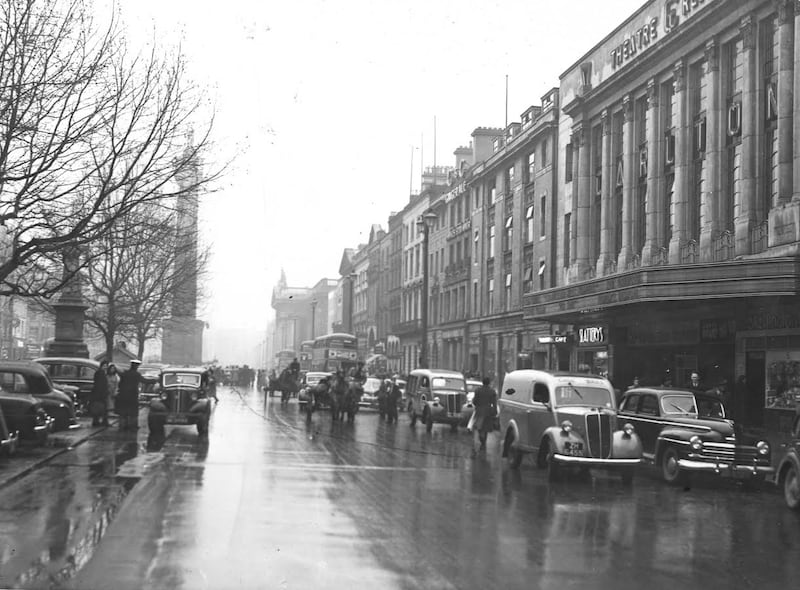
The second conclusion is that the level of dereliction on the street is lower than we expected and confined for the most part to the site of Dublin Central, the development of which has been delayed for 17 years now owing to the impact of the financial crash in 2008, Nama’s subsequent control of the scheme’s loans between 2010 and 2015, and more recently the snail-like pace of the planning process.
Guiney, for one, is optimistic for the future of O’Connell Street. “The basic infrastructure is there. There are very fine buildings and the street is wide. In terms of regeneration, the Clerys development will be very significant and Hammerson’s development of Dublin Central is essential,” he says.
McDonald, on the other hand, says he is hopeful rather than optimistic. “I think the destruction that’s going to be created by the installation of MetroLink along the west side of the street... I fear for the consequences of that and I think that’s going to be very destructive.”



















